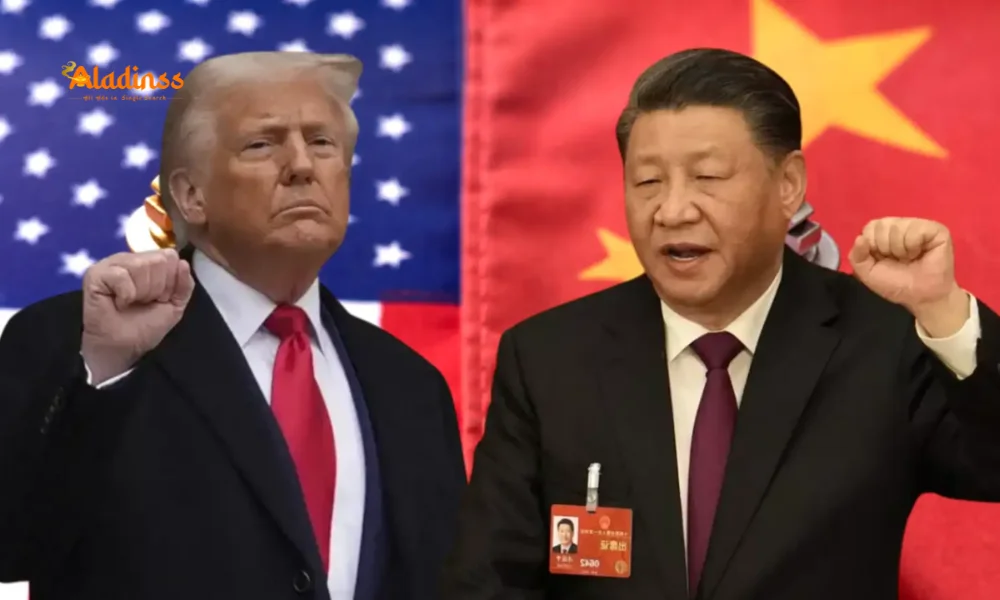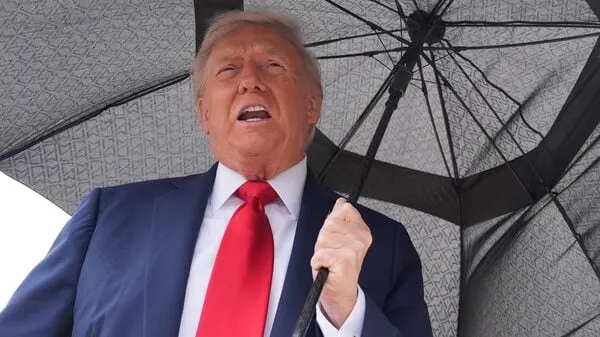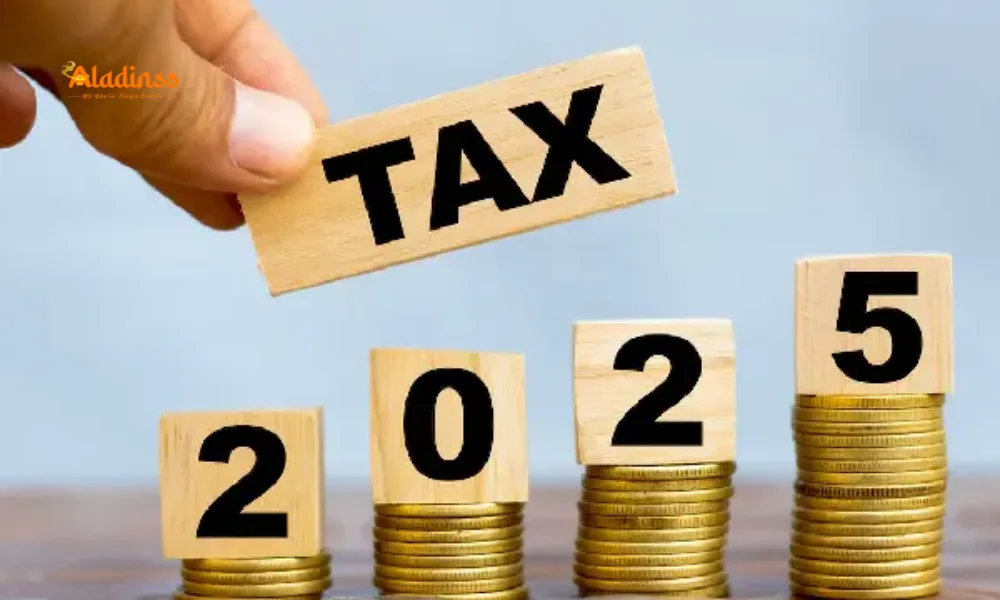Trump: US to Help China Amid Tariff Threats

Trump Softens Stance on China Tariffs: US Aims to Assist, Not Harm Beijing Economy
US President Donald Trump adopted a more diplomatic posture toward China on October 12, 2025, via a Truth Social update, emphasizing that America seeks to support rather than sabotage Beijing's growth. This comes shortly after his stern warning of 100% tariffs on Chinese imports, amid escalating US-China trade war tensions over rare earth restrictions. Trump's pivot highlights a nuanced approach in the ongoing trade dispute, where he portrayed Chinese President Xi Jinping as facing a temporary setback, aiming to avert economic downturns for both superpowers.
In his message, Trump described Xi as "highly respected" and suggested the recent aggressive moves were an aberration, not a deliberate ploy to undermine global stability. This conciliatory rhetoric follows Beijing's announcement of export curbs on critical minerals, prompting Trump's retaliatory threats including software export bans. As markets reel from the volatility, Trump's words signal potential room for dialogue, even as Vice President JD Vance urged China to embrace rationality in negotiations.
The exchange underscores the fragile balance in US-China trade relations, where rare earth elements-vital for tech and defense-remain a flashpoint. Economists predict widespread supply chain ripples, but Trump's latest overture could pave the way for de-escalation before the proposed November tariff hike.

From Tariff Threats to Olive Branch: Trump's Evolving China Strategy
Trump's weekend post marked a departure from his mid-week fury, where he labeled China's export controls "extraordinarily aggressive" and vowed comprehensive countermeasures. The initial backlash included hints at skipping a bilateral summit with Xi, though Trump later clarified no cancellation occurred, merely expressing uncertainty about its viability. This back-and-forth reflects the high-stakes poker of international trade diplomacy, where bold threats often precede bargaining chips.
Beijing's restrictions target nearly all rare earth products, essential for semiconductors, EVs, and renewables, citing national security. In response, Trump floated 100% duties on incoming Chinese goods and curbs on US critical software outflows, moves that could cripple mutual dependencies. Yet, his softer tone now frames these as leverage, not endpoints, aligning with his self-styled deal-maker persona.
Vance echoed this in separate remarks, cautioning China against irrational escalation and advocating for reasoned paths forward. The duo's tandem messaging aims to project unity within the administration, countering perceptions of erratic policymaking amid domestic economic pressures.
Also Read: ED Raids Coldrif Maker in Child Deaths Case
China's Retort: Hypocrisy in US Tariffs and Rare Earth Controls
China's Ministry of Commerce rebuffed Trump's tariff escalation as duplicitous, accusing Washington of employing "double standards" while decrying Beijing's defensive measures. A spokesperson asserted that coercive high tariffs undermine constructive engagement, reiterating China's aversion to trade wars but readiness to safeguard interests if provoked.
The ministry's statement warned of "resolute countermeasures" should the US persist on this trajectory, stopping shy of mirroring duties on American imports. This calibrated response preserves negotiation windows, even as it bolsters domestic narratives of resilience against external pressures.
- China dominates 80% of global rare earth supply, making curbs a potent weapon.
- US imports 100% of its rare earths from China, per USGS data.
- Beijing frames controls as reciprocity to US tech bans like Huawei restrictions.
- Potential for WTO challenges from both sides looms large.
Rare earths' strategic value amplifies the dispute: from iPhone magnets to F-35 jets, disruptions could stall innovation worldwide. Trump's help-not-harm plea might signal willingness for exemptions, but analysts doubt quick resolutions without concessions on IP theft and subsidies.
Market Turmoil and Global Supply Chain Fallout from US-China Trade War
The tariff salvo ignited immediate market jitters, with Dow futures dipping 2% and Nasdaq-heavy tech stocks sliding amid fears of component shortages. Economists forecast 5-10% hikes in electronics and EV prices, hitting consumers from Silicon Valley to Shanghai suburbs.
Supply chains, already strained post-COVID, face renewed threats: Apple, Tesla, and Boeing rely heavily on Chinese inputs, potentially delaying production by quarters. Europe's auto sector, eyeing green transitions, braces for mineral scarcity, while Asia's manufacturing hubs like Vietnam and India eye diversification gains.
Longer-term, the spat could accelerate decoupling, with US firms repatriating ops via CHIPS Act incentives. Yet, Trump's conciliatory shift hints at phased implementations, buying time for talks and mitigating recession risks for export-dependent China.
Historical Context: Phases of the US-China Trade Dispute Under Trump
This flare-up revives Trump's first-term playbook, where 2018 tariffs on $300B Chinese goods spurred Phase One deals but left imbalances. Post-2020, Biden retained most levies, but Trump's 2025 return escalates with rare earth focus, tying trade to national security.
Xi's "bad moment," per Trump, may nod to domestic woes like property slumps and youth unemployment, pressuring Beijing to avoid all-out war. Yet, state media portrays US moves as hegemonic, rallying nationalism.
Bilateral summits, like the uncertain Xi-Trump meet, have yielded mixed results-Abraham Accords abroad, but stalled farm buys here. Vance's reason plea underscores generational shifts, positioning the VP as a steady hand in hawkish circles.
Implications for Global Economy and Future Negotiations
Beyond bilateral friction, the US-China trade war reverberates: IMF projections slash global growth by 0.5% if tariffs stick, exacerbating inflation in import-reliant nations. Renewables lag without rare earths, hindering Paris Accord goals.
For consumers, everyday items like laptops and batteries cost more, squeezing middle classes. Businesses pivot to allies like Australia for minerals, but scaling takes years. Trump's help narrative could foster joint ventures, blending competition with cooperation on climate and AI.
- Potential Phase Two deal: Tech carve-outs for tariff relief.
- Risk of yuan devaluation to offset duties.
- EU, India as neutral brokers in trilateral forums.
- Domestic US wins: Boost for mining in Nevada, Wyoming.
As November looms, watch for backchannel diplomacy-perhaps via Treasury envoys. Trump's tone shift, from confrontation to collaboration, may avert depression for both, fostering a multipolar trade order.
Prospects for De-Escalation in US-China Relations
Optimists see Trump's words as groundwork for summits, echoing 2019 Osaka breakthroughs. Pessimists warn of election-year posturing, with midterms amplifying hardline voices. Beijing's measured reply leaves doors ajar, prioritizing stability over spite.
Ultimately, mutual vulnerabilities-US debt holdings, Chinese forex reserves-favor talks. A balanced resolution could redefine 21st-century economics, turning rivals into resilient partners.
(Insights drawn from trade analyses and official communiques, monitoring developments in US-China trade war dynamics.)
Comment / Reply From
No comments yet. Be the first to comment!










